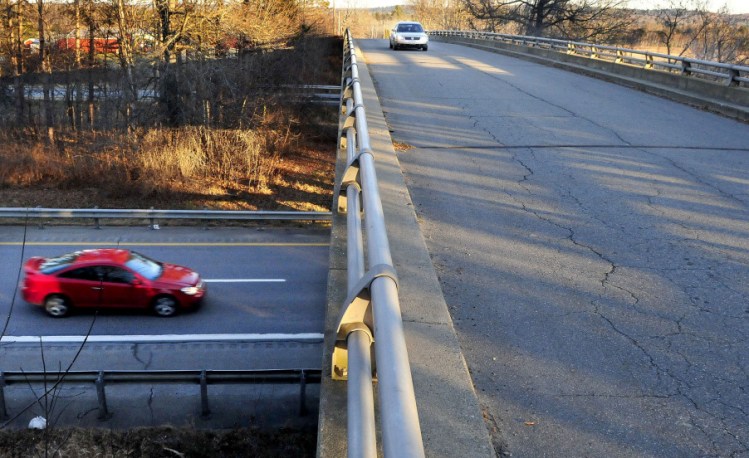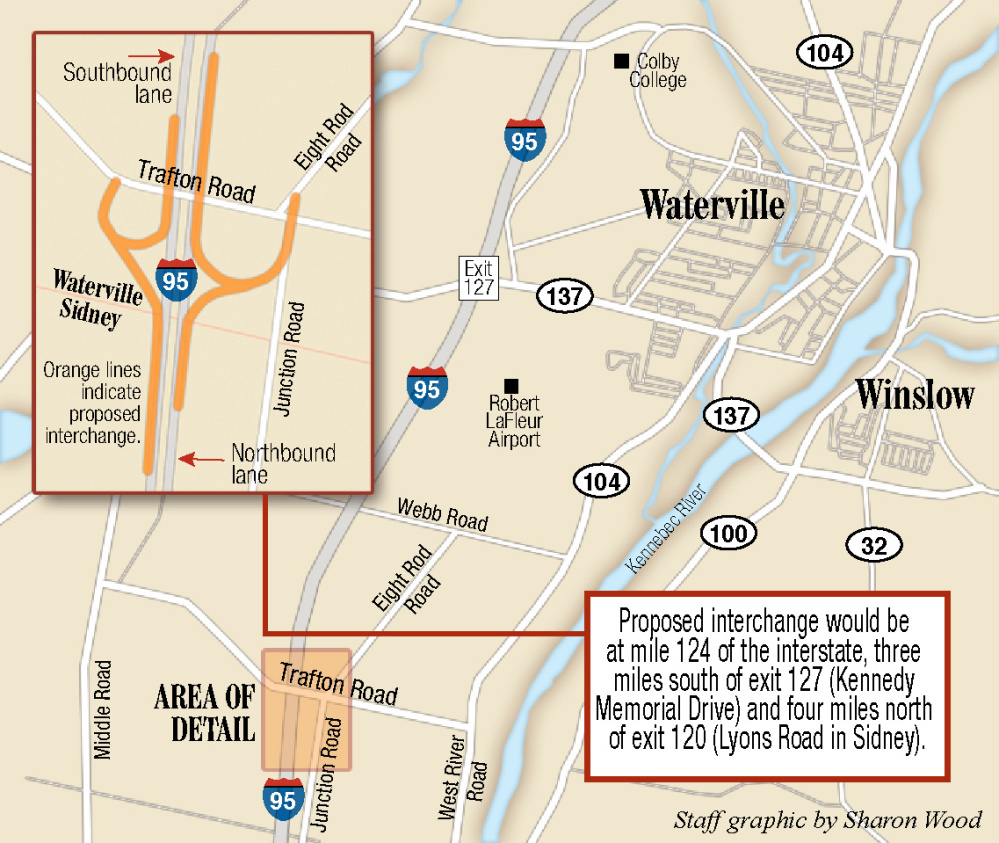A new state initiative that gives road projects a higher priority if developers help pay for them will be used to fund construction of an interchange on Interstate 95 in Waterville.
With limited federal dollars available for transportation projects, the state must consider using both public and private money for some projects that spur economic development and provide a broader public benefit, said David Bernhardt, commissioner of the Maine Department of Transportation.
“It’s a way of partnering, a way of leveraging each of our dollars,” he said.
Alan Caron, the founder of GrowSmart Maine, an advocacy group that works on land-use issues, supports the initiative because there’s not enough public money available to meet the state’s transportation needs.
If not carefully implemented, however, the practice could make it easier for real estate speculators to get projects approved that benefit them more than the public, he said. There is a long history of developers in the United States making fortunes by buying vacant land near highways and then using political influence to get interchanges built, Caron said.
“We have to be careful that we don’t let necessary transportation projects go unattended to because someone has a big checkbook and buys what they want rather than what the rest of us need,” he said.
PROJECT COSTS SPLIT THREE WAYS
The $4.81 million interchange in Waterville will be a half-cloverleaf at Trafton Road near the Sidney town line, allowing motorists to get on or off in either the northbound or southbound direction. Expected to go out to bid next summer, the project is the state’s first under Bernhardt’s new program, called the Business Partnership Initiative.
It is geared toward projects that help local economic development efforts, and splits a project’s cost among three parties: the state, local government and business. Bernhardt wants the business community to be aware of the new program and says anyone interested in it should call the municipality and regional transportation department office where a proposed development project is located. The process can be started by a municipality or a business.
In Waterville, the interchange had been discussed by the city and the Department of Transportation for years, but never got approved because of a lack of funds. Last year, the project moved off the shelf after the DOT and representatives of Trafton Properties Inc. talked about sharing the project’s cost.
The program is modeled after the $13 million Exit 113 interchange project in Augusta. That project, finished in 2013, was the product of a three-way agreement between the state, the city of Augusta and MaineGeneral Medical Center. The agreement called for the state to pay 60 percent, MaineGeneral 29 percent and the city 11 percent in the form of tax increment financing. The interchange provides motorists a direct route to the new hospital.
Trafton Properties Inc., a Rhode Island-based land holding company that owns 923 acres near the site of the new interchange in Waterville, will spend $1.81 million on the project, matching a DOT contribution of the same amount. The federal Economic Development Administration has awarded a grant of nearly $1 million.
The exit will be roughly halfway between the Lyons Road exit in Sidney and the Kennedy Memorial Drive exit in Waterville.
Trafton Properties, which owns the former Wyandotte mill at the corner of West River and Trafton roads, believes the interchange will draw tenants to the building and make the area more attractive to manufacturers and light industry.
Easy highway access is vital for companies that ship products and take deliveries by truck, said Harry Kojoian, vice president of operations for Trafton Properties.
“They like to have that access,” he said.
ELIMINATES NEED FOR OTHER ROADWORK
He expects the company’s $1.81 million investment in the interchange will add at least that much value to the company’s real estate holdings in Waterville and Sidney. The land is primarily open fields.
Without the interchange, trucks would have to travel north on Route 104 (past Thomas College) and access I-95 via Kennedy Memorial Drive, more than five miles away.
The new interchange will take traffic pressure off Kennedy Memorial Drive so the state won’t have to build an additional lane to preserve that road’s capacity to move traffic, said Stephen Landry, state traffic engineer.
“Maine DOT is looking for the biggest bang for the buck,” he said. “We are trying to come up with ways to make our dollars go further.”
A project that does not make the priority list may look more appealing if “someone is dangling some money,” he said.
At a time when public dollars are scarce, it makes sense to partner with the private sector, said Maria Fuentes, executive director of the Maine Better Transportation Association, a group that lobbies for transportation funding.
The timing is good to look for these kinds of partnerships, she said, because companies are starting to feel confident enough in the economic recovery to make investments.
“It is good policy,” she said. “I think it’s a great way to have private dollars help construction projects.”
Private funding for public transportation projects has become more common nationally. From 1989 to 2013, there were 98 completed highway projects totaling $61 billion that involved partnerships with private businesses – about 1.5 percent of approximately $4 trillion spent on highways during that period.
PANEL: TRANSPARENCY IS CRITICAL
A U.S. House transportation panel that examined the trend last year concluded that public-private partnerships are a useful tool. The panel also found that a transparent process is critical for holding the public and private partners accountable.
Caron said projects with private funding must meet the same standards required for any public project, such as improving safety and reducing traffic congestion, and be reviewed by an independent agency protected from political influence.
The Waterville project was put through this review at the Federal Highway Administration, which approved the project in January, Landry said.
The project met eight policy goals set by the state and the federal government for providing access to a federal highway, Todd Jorgensen, division administrator, wrote in a Jan. 7 letter approving the project.
Because the state’s transportation needs always exceed available funding, the need to be creative and innovative in developing and funding projects is more critical than ever, said Bernhardt, the DOT commissioner.
The new program “benefits individual communities and businesses while making sure every dollar is wisely spent,” he said.
Waterville City Manager Michael Roy said the city supports the project because it needs to expand its tax base, and the area near the planned intersection is the only undeveloped part of the city that has potential for commercial growth.
“From an economic development point of view, it’s extremely important,” he said.
Send questions/comments to the editors.



